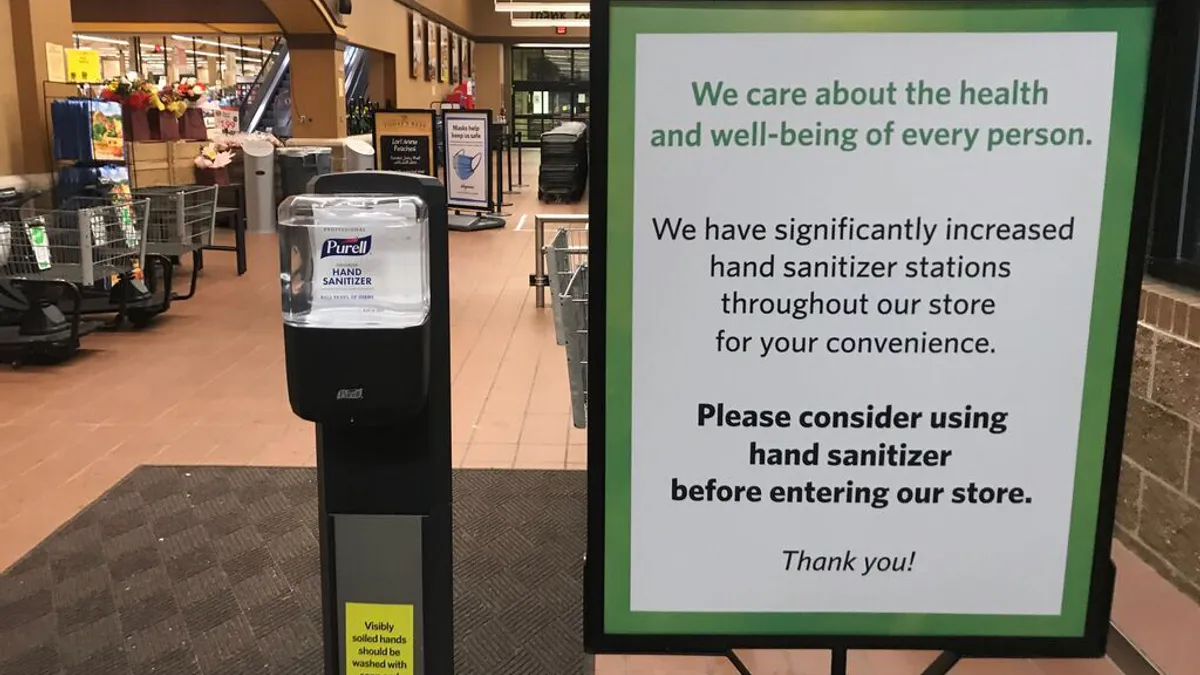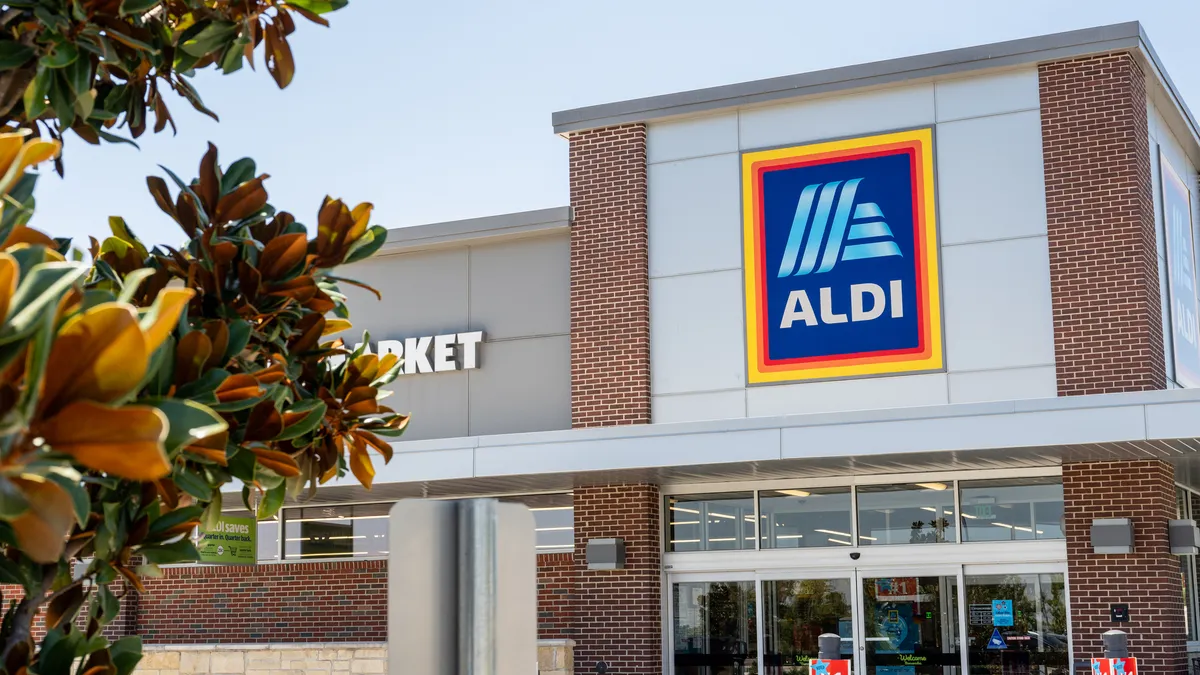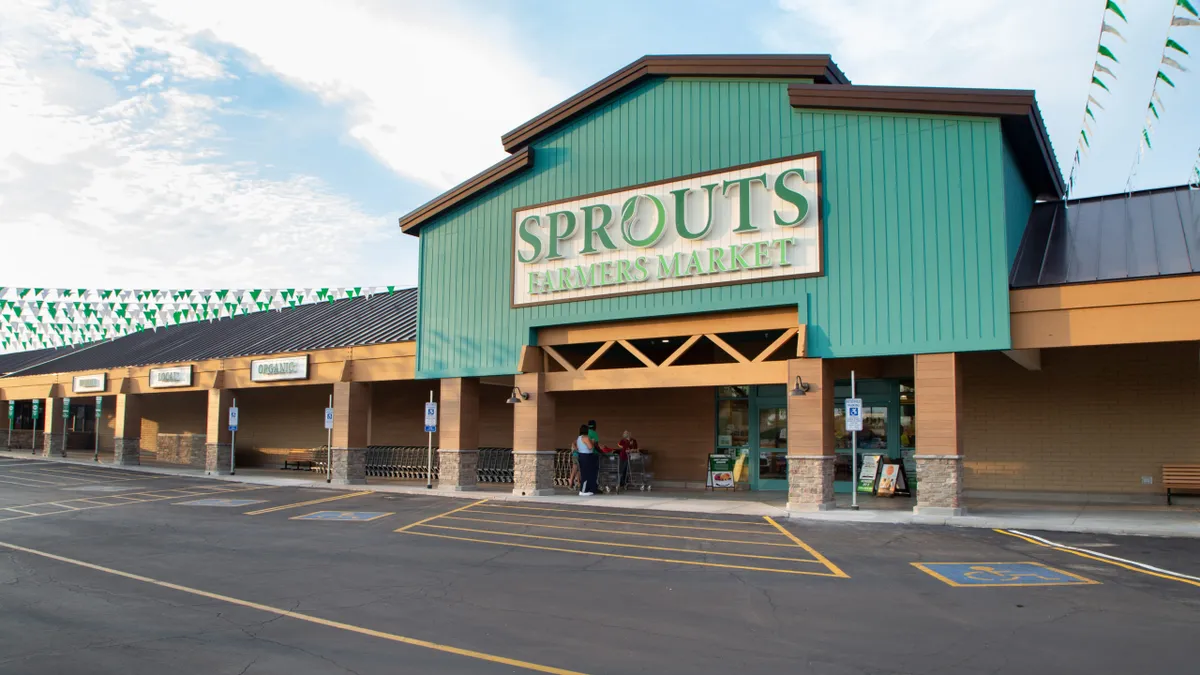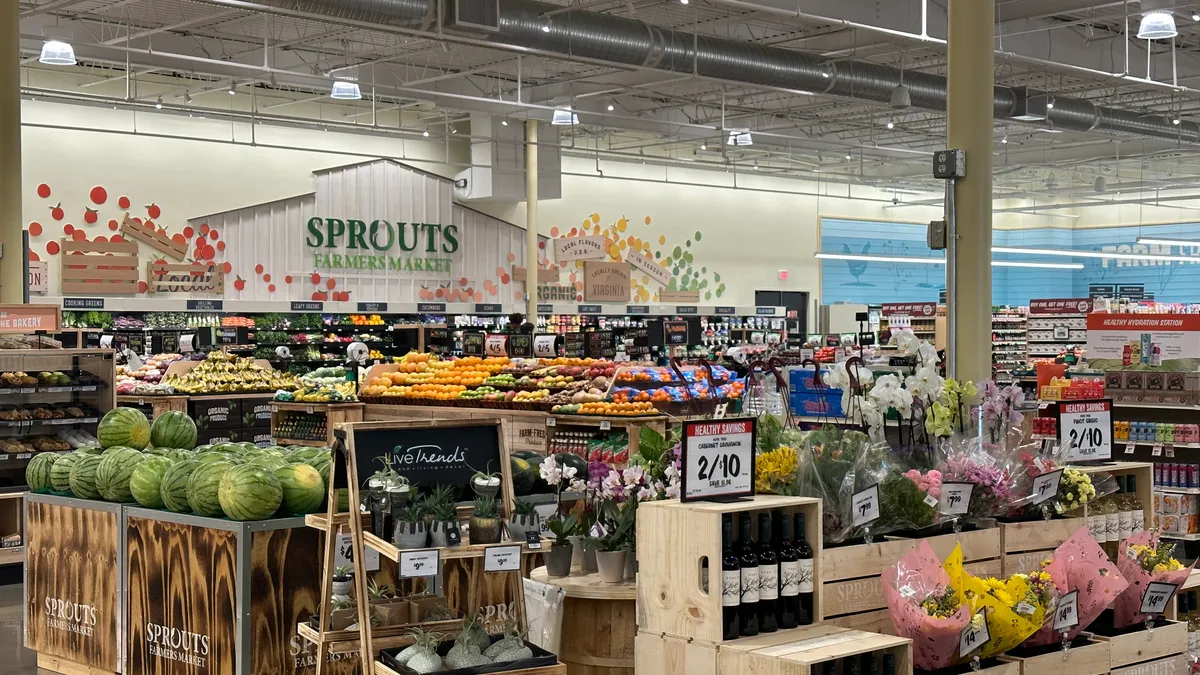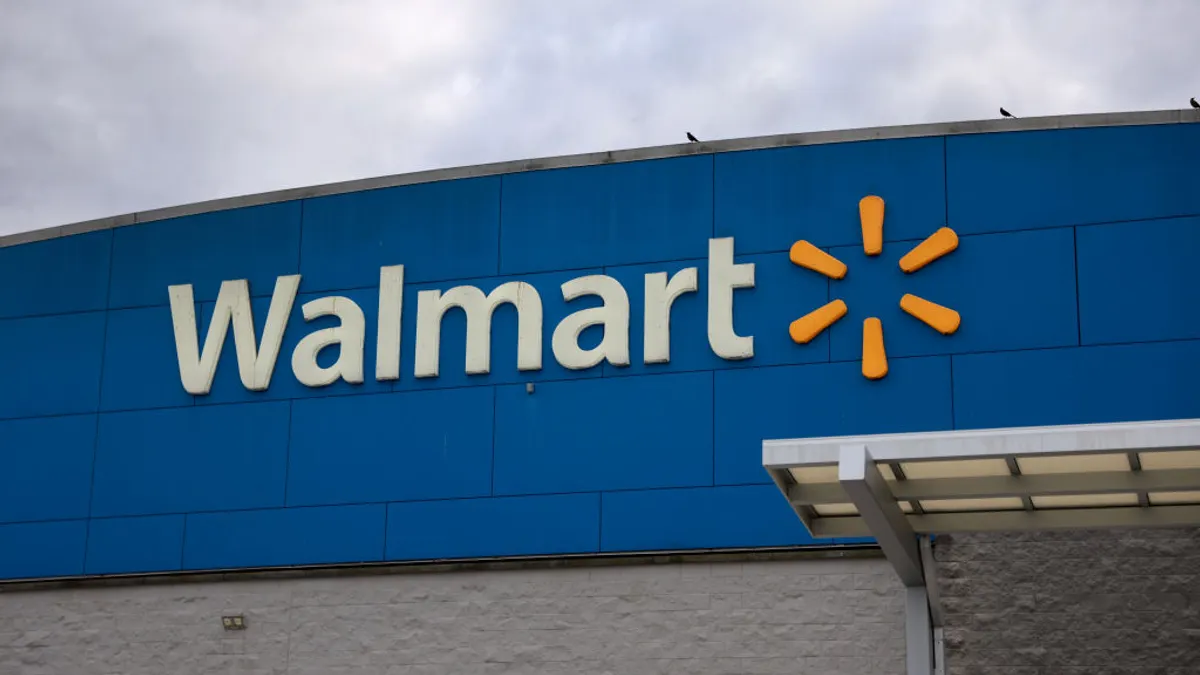Four months after beginning a crash course in how to safely operate stores amid a vicious, out-of-control virus outbreak, grocery stores have become as closely associated with plexiglass and face masks as they are with household basics like produce, meat and packaged goods.
Supermarkets unveiled a series of safety measures as the coronavirus pandemic began in March. Stores quickly took steps like putting up barriers at checkout counters, installing signage to promote social distancing, limiting occupancy and eliminating self-service options like salad bars.
But while those once-unimaginable actions may have initially put off shoppers suddenly deprived of the food-shopping experience they were used to, the grocery industry's new focus on sanitation is emerging as an opportunity for food retailers to embed messages about their commitment to safety in their branding strategies, according to grocery industry experts.
Grocers that are able to find the right balance between emphasizing safety and providing a reliable supply of essential goods could earn the long-term trust of edgy consumers whose priorities have changed swiftly and dramatically, they said in interviews with Grocery Dive.
“It’s a mindset shift,” said Jordan Berke, a former Walmart executive who now runs Tomorrow Retail Consulting. "Cleanliness has moved from a compliance responsibility to something that is part of the customer experience."
Many shoppers are paying close attention to cleanliness when they visit stores, research shows. Twenty-nine percent of consumers would entirely stop patronizing a retailer if they knew it did not have health and safety measures in place, according to a survey Ipsos, a market research company, conducted in early July.
As the nation becomes resigned to an uneasy routine driven by the frightening, often unpredictable nature of the coronavirus pandemic, supermarket planners have started paying close attention to the subtle signs that can signal to a consumer that a store is safe, according to Kevin Kelley, co-founder and principal of Shook Kelley, an architecture and design firm that works closely with grocers to conceptualize and build stores.
“He who tilts the scales wins, so we have to figure out innovative ways to convince the customer to come to the store,” Kelley said. “We have to make that risk reduction issue not seem as difficult as it does on the news.”
As recently as the 1990s, grocery stores were heavily focused on presenting an image built around safety, owing to their roots as places where people could find a dependable food supply, according to Kelley. "Stores literally picked their colors, material and layouts based on cleanliness," he said. "They succeeded at creating a superclean [environment], but it came off as clinical and sterile."
That changed when grocers like Whole Foods discovered that shoppers loved feeling like they were close to where their food came from, and created farmers-market-like atmospheres in their stores. Now, with fear over COVID-19 such a dominant factor in people's lives, stores are returning to their former way of thinking, Kelley said.
As they examine ways to tailor stores so they appeal to consumers who have become more sensitive to safety cues, retailers are keenly aware that people trust their instincts when making decisions, said Kelley, who has worked with companies like Kroger, Whole Foods, Save Mart, Kraft and Coca-Cola.
With that in mind, store designers are having to balance their efforts to create the safest possible environment for shoppers with the ingrained tendency of people to want to see for themselves what employees are doing, and to draw conclusions from the evidence that's in front of them, he explained.
"Cleanliness has moved from a compliance responsibility to something that is part of the customer experience."

Jordan Berke
Former Walmart China executive and founder of Tomorrow Retail Consulting
That could cause stores to place food-preparation counters where customers can see them instead of in backrooms where it's easier to control conditions, Kelley said.
“So much of consumer behavior is perceptual. We judge things based on their cover, and we look for visual cues and triggers,” he said. “The store in essence is one giant package, and you’re inside that package.”
The right odors can be even more effective than what people can see at signaling to consumers that a supermarket is clean and places a priority on sanitation, Kelley added.
“We actually want [stores] to have the smell of cleanliness to tap into the senses of consumers,” he said. “Anything you can do to activate the senses before the intellectual [part of the] mind is going to make a big difference” in making customers feel safe.
Putting cleaning practices front and center
Beyond making structural and design changes that will show up in stores down the road, grocers can start baking cleanliness into their images more immediately by drawing people’s attention to sanitization practices instead of handling them behind the scenes, as they have typically done, said Jason Goldberg, a veteran retail analyst who is chief commerce strategy officer at Publicis, an advertising firm.
For example, letting shoppers see an employee cleaning shopping carts as they walk into the store can be a powerful way of communicating a store’s commitment to sanitizing surfaces, Goldberg said. Later on, as disinfecting technology for retail spaces evolves, stores are likely to conspicuously install automated sanitizing equipment in places like shelves and freezers so shoppers can see it in action, he predicted.
“Previous to COVID, you would try to do a lot of cleanliness and janitorial practices out of sight of customers. Now you want them to be visible, because you want to send a message to customers that things are safer,” Goldberg said.
Machines that can automatically handle certain sanitation functions in retail and other high-traffic environments are already available. Brain Corp announced in late 2018 that Walmart had arranged to use an artificial intelligence platform it makes to control a fleet of autonomous commercial floor-scrubbing machines. In April, Fourth Avenue Supermarket, a grocery chain in Alabama, announced that it had begun using cart-sanitizing machines from Sanitizit at its five stores. And in June, Fetch Robotics, Build with Robots and the city of Albuquerque, New Mexico, said the city's international airport is using a robotic disinfecting system they co-developed.
Goldberg pointed to the decision by many grocers early on in the pandemic to set aside certain shopping hours for customers who are older or have compromised immune systems as another example of how promoting safety can perform a powerful marketing function with potentially long-term benefits.
“I don’t know if [the reserved shopping times] are safer, but what I do know is that there are a lot of vulnerable people who are worried about their health, and when stores offer them those hours, it’s a signal that the brand cares about their health,” he said.
Goldberg and Berke said it would not be surprising if grocers look to turn their emphasis on public-facing cleanliness routines into opportunities to strike partnerships with makers of cleaning supplies and equipment.
"It will be interesting to see who can help us give customers an idea of cleanliness and trust in an innovative, friendly way," said Berke, who helped lead Walmart's operations in China, which is considered to be on the leading edge of retail innovation, before returning to the United States and becoming an independent retail consultant.
Goldberg compared the opportunity grocers have to talk up their sanitization efforts to the way airlines and hotel companies have pushed messaging about cleanliness to the top of their agendas in order to build trust and confidence with consumers. He pointed to United Airlines' CleanPlus initiative, a partnership with Clorox and the Cleveland Clinic announced in May, as an example of how companies are striving to convince customers they are fastidious about safety.
"Cleanliness is literally front and center in their marketing," Goldberg said. "If you would have said in January that United would have an ad featuring Clorox, people would have said, 'That's ridiculous.'"


